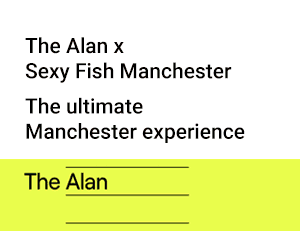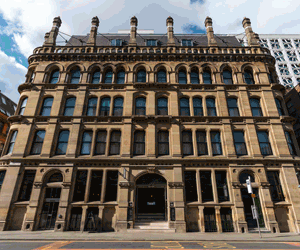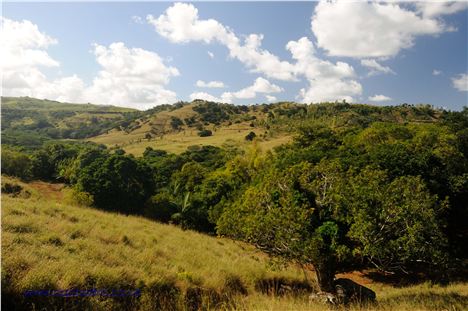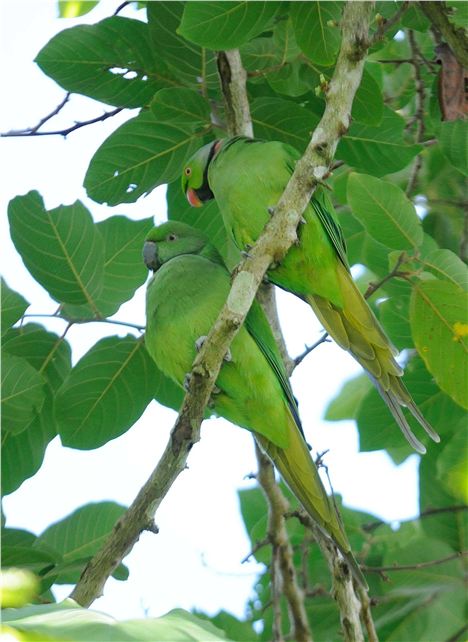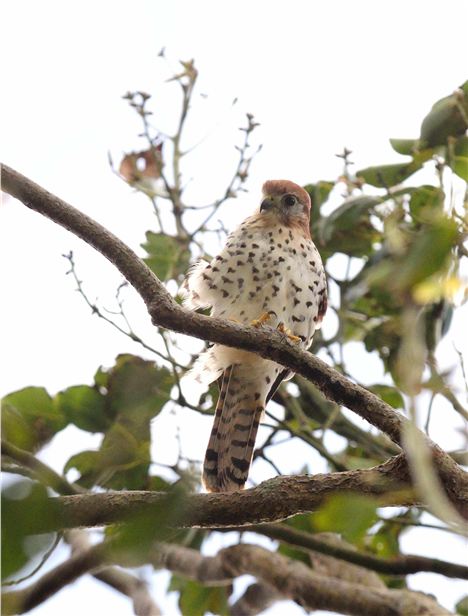IMAGINE Mauritius and the first things to come to mind are idyllic beaches, a view of palm trees and that most famous of extinct birds, the Dodo. Yet a visit to this Indian Ocean jewel will reveal a vibrant island, secure in its rich multi-cultutral history, proud of its independence and looking forward to the future by embracing the best of the past and the new
Mauritius has had a remarkable history; it has been under the control of the Dutch, the French and the British, before gaining independence in the late 1960s. Historically, the production of sugar cane on the estates or ‘domaines’ involved slaves from African and, later, workers from India.
This has led to very mixed society, which is happily integrated. Shrines to Hindu deities sit happily aside those to the Virgin Mary in every village though the only real point of argument (admittedly good-natured) is between the fans of Manchester United and Liverpool. Sugar cane is still the island’s main crop today, but IT and tourism are now preferred career choices for many Mauritians.
The island’s wild heritage has suffered over the centuries and only two per cent of the island’s endemic forest cover remains. What is left of the flora and fauna, is confined to refuges in the south and east that are now geared up to welcome tourists who are increasingly asking to see the ‘real’ Mauritius.
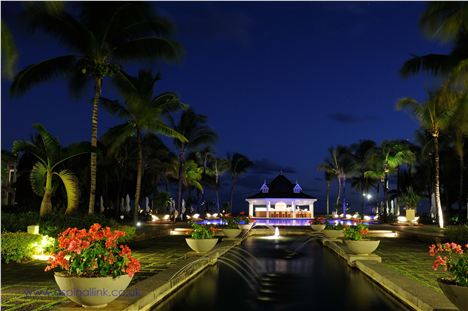 Elegant simplicity at the Heritage Telfair Resort, Domaine de Bel Ombre,
Elegant simplicity at the Heritage Telfair Resort, Domaine de Bel Ombre,
Anyone visiting Mauritius can visit Frederica Nature Reserve but those staying at the Heritage Telfair and Awali hotels can feel content that some of the revenue from their holiday will be going towards the upkeep of the reserve, for it is all owned as one large estate.
The hotel staff are very proud of their connection to the nature reserve and guests are encouraged to visit and learn more about the wildlife and conservation efforts on this part of the island.
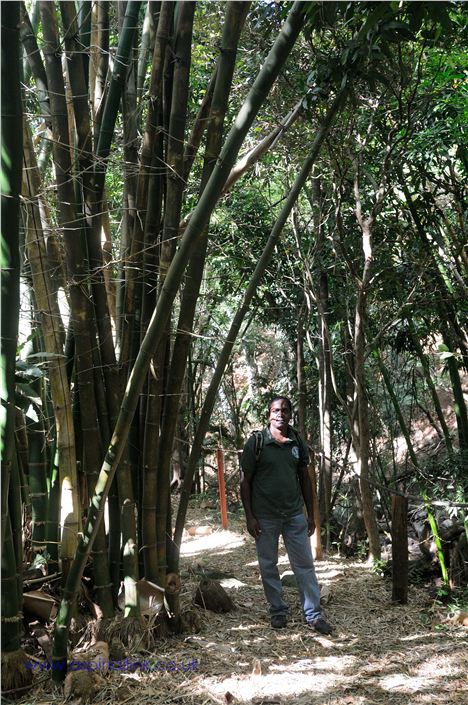 Jean-Claude Sevathian from the Mauritian Wildlife Foundation
Jean-Claude Sevathian from the Mauritian Wildlife Foundation
We were lucky enough to enjoy special access to restricted areas which had been arranged by the Mauritian Wildlife Foundation. Our guide, botanist and author Jean-Claude Sevathian, led us through the forest, pointing out the few remaining Black Ebony trees: once so prized for the piano key industry, they were nearly wiped out.
A few miles into the forest, now dominated by the introduced Chinese Guava and Cinnamon trees, we emerged into a clearing to see the abandoned aviaries where an international captive breeding programme brought the exquisite Echo Parakeet back from the brink of extinction when there were just twelve birds left. Now the figure stands at over 300 and we were privileged to see a courting pair overhead in the trees.
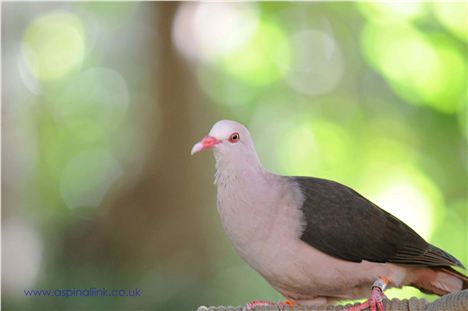 We also saw a rare Pink Pigeon (above) by the conservation centre.
We also saw a rare Pink Pigeon (above) by the conservation centre.
Mauritian food epitomises the island’s happy embrace of ‘difference’ and the food culture is, as you would expect when two continents combine: remarkable. It relies on delicate spices to enrich fish and fruit dishes, inspired by Indian and Africa cuisine, yet given a subtle European twist.
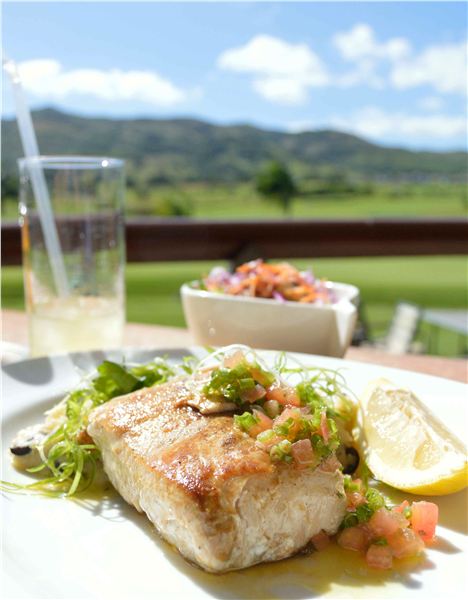 Lunch at the Heritage Golf Club, Domaine de Bel Ombre
Lunch at the Heritage Golf Club, Domaine de Bel Ombre
To experience the finest Mauritian cuisine while staying in the South of the island, an evening at The Domaine de Bel Ombre is a must and there's a free shuttle service for guests of the Heritage hotels, Le Telfair and Awali.
This is the epitome of fusion food – a European inspired pheasant terrine, Mediterranean-style octopus, and venison and wild boar curries. The deer and boar (neither native to the island) are taken from the estate and their sustainable management is key to protecting the remaining forest and ensuring the survival of the native species. The Heritage Golf Club also serves exquisite food.
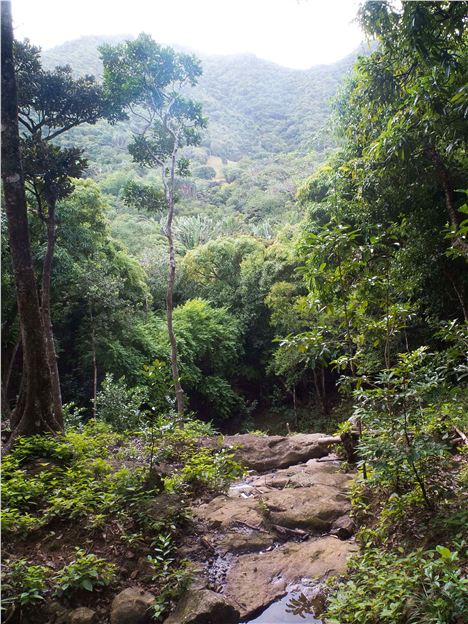 One of many stunning views on the trek at La Vallée De Ferney
One of many stunning views on the trek at La Vallée De Ferney
To explore the east of the island, we moved to the Anahita The Resort, where they were equally proud to share with us their ecotourism credentials in the form of two impressive nature reserves: La Vallée de Ferney and Domaine de l'Etoile, which are, like the resort, owned by the Ciel Group.
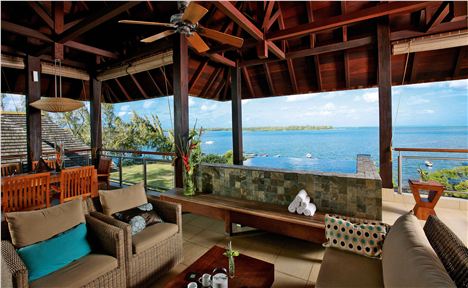 Plunge pool on the balcony of a sea view suite at Anahita The Resort Anahita The Resort is set on the coast, amid the stunning mangrove-fringed lagoons and coral islands that make up some of the best scenery on the island. Our stay here allowed us to unwind even further and enjoy the world class accommodation offered in this quiet sanctuary.
Plunge pool on the balcony of a sea view suite at Anahita The Resort Anahita The Resort is set on the coast, amid the stunning mangrove-fringed lagoons and coral islands that make up some of the best scenery on the island. Our stay here allowed us to unwind even further and enjoy the world class accommodation offered in this quiet sanctuary.
 The Lagoon at Anahita The Resort
The Lagoon at Anahita The Resort
The turquoise lagoon here, one of the largest on the island is sheltered and offers many opportunities for sailing, diving and kite surfing and a free shuttle boat is available to take guests to the nearby Isle aux Cerfs to sunbathe on the white coral sand.
Anahita is a few minutes’ drive from the Domaine de l’Etoile reserve, one of the largest areas of land to be left untouched by the hand of man. Following a gorgeous lunch of traditional Mauritian food we set out with our guide, Gerard. Trekking, horse-riding, quad biking, buggies and mountain-biking are available at Domaine de l’Etoile.
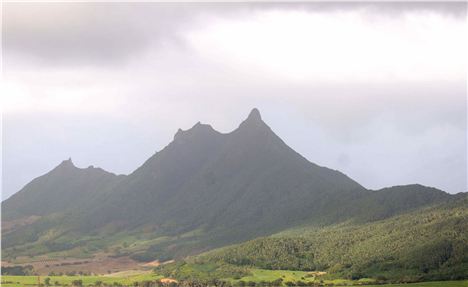 The volcanic landscape at Domaine De L'Etoile
The volcanic landscape at Domaine De L'Etoile
The landscape here is fantastic, the solidified lava cores of extinct volcanoes emerge from the forest of Ebony trees and as we stand and take in the view a flash of russet in the sky means we’re in the presence of one of the rarest birds of prey on the planet, the Mauritian Kestrel.
This small bird, similar to the kestrel we are familiar with back home, was rescued from extinction when there were only four birds remaining.
Eager to see more, we organised a boat trip to the tiny coral island of Ile aux Aigrettes. This speck in the Indian ocean offers, perhaps more of a glimpse of what the first explorers would have seen when they set foot on Mauritian soil than anywhere else, as all the low growing forest is native and is kept in check by the island’s resident giant tortoises.
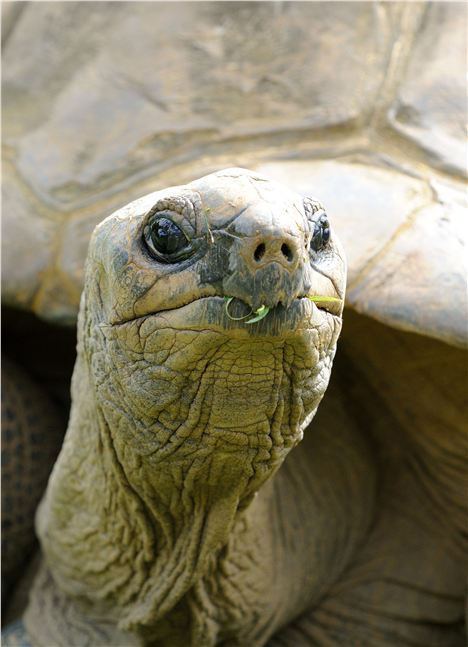 Giant tortoises on the Ile Aux Aigrettes are from the Seychelles
Giant tortoises on the Ile Aux Aigrettes are from the Seychelles
The native Mauritian Giant Tortoise is now extinct, but it once played an important part in the island’s ecology. It was one of the only grazing animals on an island that had no mammals (except bats) and was one of the few things able to compete with the Dodo and the other giant flightless birds that are now also gone – one of which was a huge blue parrot.
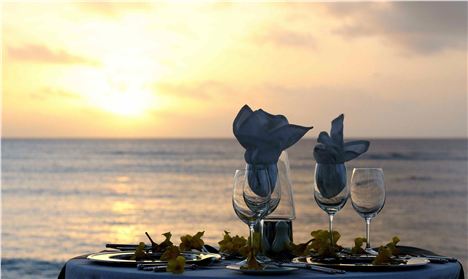 Fine dining at La Faya Restaurant, Le Meridien Ile Maurice, North West Mauritius
Fine dining at La Faya Restaurant, Le Meridien Ile Maurice, North West Mauritius
Tourism has been well-established on the north west of the island for some time and it was here at Le Meridien Ile Maurice that we finished our visit and we were able to really explore the island’s underwater life.
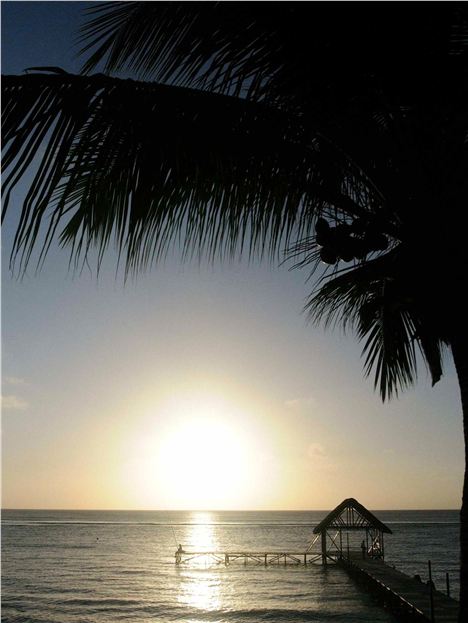 Jetty at Le Meridien Ile Maurice
Jetty at Le Meridien Ile Maurice
Jonathan Cesar, the dive guide at Easy Dive Diving Centre (based in the hotel complex), was one of the best we’ve ever met. Within minutes we’d struck up an easy going friendship and he was more than content to take us to some of his favourite locations to photograph some of the underwater wildlife.
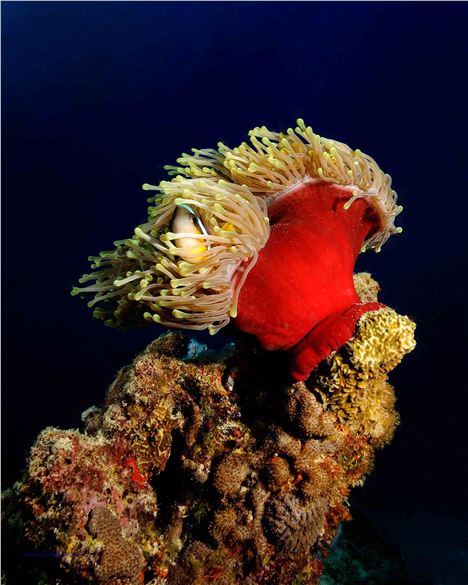 A Mauritian Clown Fish peeps out from behind his Anemone home
A Mauritian Clown Fish peeps out from behind his Anemone home
Richard was particularly interested to see the Mauritian Clown Fish, this relative of Disney/Pixar’s Nemo, who, like many of the birds we had seen earlier, is found nowhere else on the planet – and we had a great time tempting them out of their anemones so Richard could take a picture.
Jonathan was happy to guide us, as experienced divers, but along with the rest of the staff was equally at home training novices. Like most Mauritians he could switch between English for us, French for the group of trainees he was supervising and fluent Creole when talking to his colleagues.
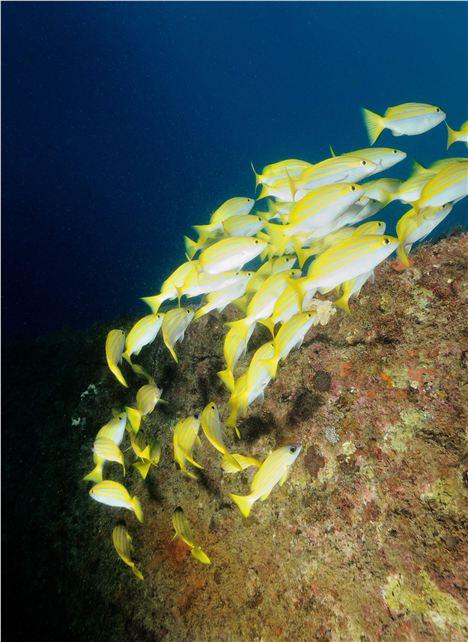 Shoals of Snapper, who inhabit ships deliberately sunk to form artificial reefs, below
Shoals of Snapper, who inhabit ships deliberately sunk to form artificial reefs, below
We enjoyed half a dozen dives photographing coral-encrusted reefs and deliberately sunken ships, which now form stunning artificial reefs replete with blue lined Snapper and Frogfish, so well camouflaged you don’t know where the fish starts and the rusty metal begins.
Angie and Richard Aspinall are a husband and wife team of photographers and freelance writers living and working in Yorkshire.
Visit their websites:
www.aspinallink.co.uk
www.triggerfishphotography.co.uk
Fact file
Our accommodation:
South West: http://www.heritageletelfair.mu/
East: http://www.anahita.mu/
North West: http://www.lemeridien-mauritius.com/
Diving at Le Meridien: http://www.easydivemauritius.com/en/default.aspx
Getting there:
We flew direct from Heathrow with Air Mauritius: http://www.airmauritius.com/
Frederica Nature Reserve: http://www.heritageletelfair.mu/en/vacations-mauritius/frederica-nature-reserve
Mauritian Wildlife Foundation: http://www.mauritian-wildlife.org
Nature reserves: http://www.valleedeferney.com and http://www.cieletnature.com/domaine-de-letoile/index-en.html





